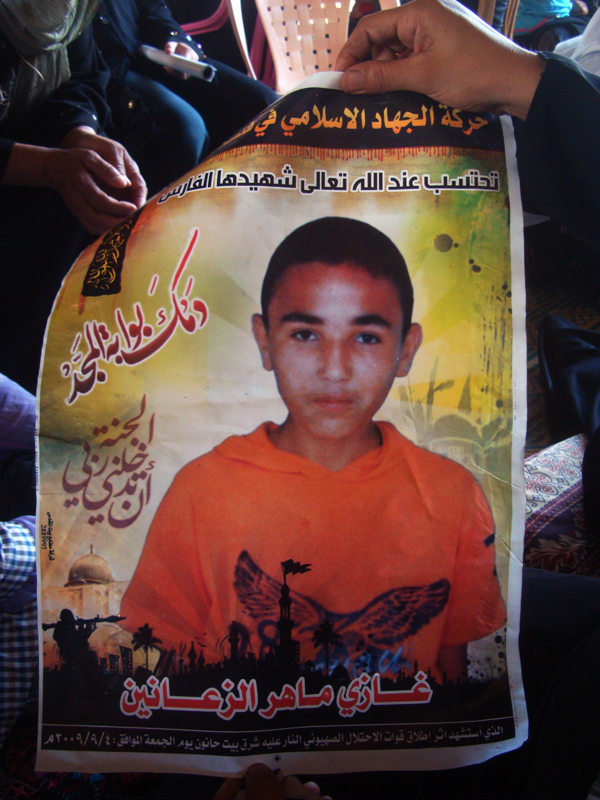Thursday, 12 December 2013 00:00
Following disengagement from the Gaza Strip in September 2005, Israel unilaterally and illegally established a so-called “buffer zone”, an area prohibited to Palestinians along the land and sea borders of the Gaza Strip. The precise area designated by Israel as a “buffer zone” is not clear and this Israeli policy is typically enforced with live fire. The establishment of the ‘buffer zone’ is illegal under both Israeli and international law.
Preventing Palestinians from accessing their lands and fishing areas violates numerous provisions of international human rights law, including the right to work, the right to an adequate standard of living, and the right to the highest attainable standard of health. Enforcing the “buffer zone” through the use of live fire often results in, inter alia, the direct targeting of civilians and/or indiscriminate attacks, both of which constitute war crimes.
Following the Israeli offensive on the Gaza Strip in November 2012, a ceasefire agreement between Israel and Palestinian armed groups was brokered by the Egyptian government, which included terms related to access to land and sea. In an online statement on 25 February 2013, the Israeli Coordinator of Government Activities in the Territories (COGAT) declared that fishermen could now access the sea up to six nautical miles offshore, and that farmers could now access lands in the border area up to 100m from the border fence. However, both references have since been removed from the statement. Then, on 21 March 2013, the Israeli forces’ spokesperson announced re-reducing the fishing area allowed for Palestinian fishermen from 6 nautical miles to 3 nautical miles. However, on 21 May 2013, Israeli authorities decided to allow fishermen to sail up to 6 nautical miles.
Dimensions
On land, inside Palestinian territory
Distance from the border fence, up to which access is permitted:
· Second Intifada (2000): 150 metres
· According to Israel (2010) : 300 metres
· 22 November 2012: unclear parameters
· 25 February 2013: 100 metres
· 21 March 2013: 300 metres
In reality, attacks against civilians take place
anywhere up to approximately 1.5 kilometres inside the border fence.
This constitutes approximately
17% of the total territory of the Gaza Strip.
|
At sea, off the coast of the Gaza Strip
Distance from the shore, up to which access is permitted:
· Oslo Accords (1994): 20 nautical miles (nm)
· Bertini Commitment (2002): 12 nm
· October 2006: 6 nm
· End of 2007 : 3 nm
· 22 November 2012: 6 nm
· 25 February 2013: unknown
· 12 March 2013: 3 nm
· 21 May 2013: 6 nm
In addition, access is consistently denied in the
following areas:
· 1.5 nm in the north along the maritime boundary
with Israel
· 1 nm in the south along the maritime boundary
with Egypt
|
Impact
On land
· Approximately 27,000 dunums, 35% of the Gaza
Strip's agricultural land, can only be accessed under high personal risk,
as Israeli attacks may result in injury or death of civilians.
· 95% of the restricted area is arable land.
· After the evacuation of settlements (2005) and ‘Operation
Cast Lead’ (2008-2009), the majority of Palestinian families living in the
border areas abandoned their land and homes.
|
At sea
· Palestinians are completely prevented from accessing
85% of the Palestinian maritime areas recognised in the 1994 Gaza
Jericho Agreement.
· Approximately 3,700 fishermen work under high
personal risk every day at sea.
· Approximately 8,200 persons work in the fishing
industry.
· Approximately 65,000 persons, including
individuals who work in the fishing industry and their dependents, are
affected by the “buffer zone” restrictions at sea.
· The area near the coast is markedly over-fished.
|
* These numbers do
not represent all the incursions into Palestinian waters by Israeli naval
forces, only the reported incidents. More often, the reported incidents involve
shooting, injury and/or killing.
Attacks
November 2013
Attacks
|
Total
|
“Buffer
zone” on land
|
“Buffer
zone” at sea
|
Shelling
|
3
|
3
|
0
|
Shooting
|
20
|
8
|
12
|
Incursions
|
3
|
3
|
0
|
Land levelling
|
0
|
0
|
0
|
Detention incidents
|
5
|
2
|
3
|
Total incidents
|
31
|
16
|
15
|
Consequences
of attacks
November 2013
|
Consequences
|
Total
|
“Buffer zone” on land
|
“Buffer zone” at sea
|
|
Death of persons
|
0
|
0
|
0
|
|
Minors
|
0
|
0
|
0
|
|
Women
|
0
|
0
|
0
|
|
Injury of persons
|
6
|
5
|
1
|
|
Minors
|
0
|
0
|
0
|
|
Women
|
0
|
0
|
0
|
b. Property related violations
November 2013
|
Consequences |
Total
|
“Buffer zone” on land
|
“Buffer zone” at sea
|
|
Property damaged
|
1
|
0
|
1
|
|
Property confiscated |
3
|
0
|
3
|
|
Dunums razed |
0
|
0
|
0
|
c. Detention
November 2013
Consequences
|
Total
|
“Buffer zone” on land
|
“Buffer zone” at sea
|
Detention
incidents
|
5
|
2
|
3
|
Total persons detained
|
10
|
4
|
6
|
Minors detained
|
5
|
3
|
2
|
Women detained
|
0
|
0
|
0
|
* Nine of the arrested persons were released




